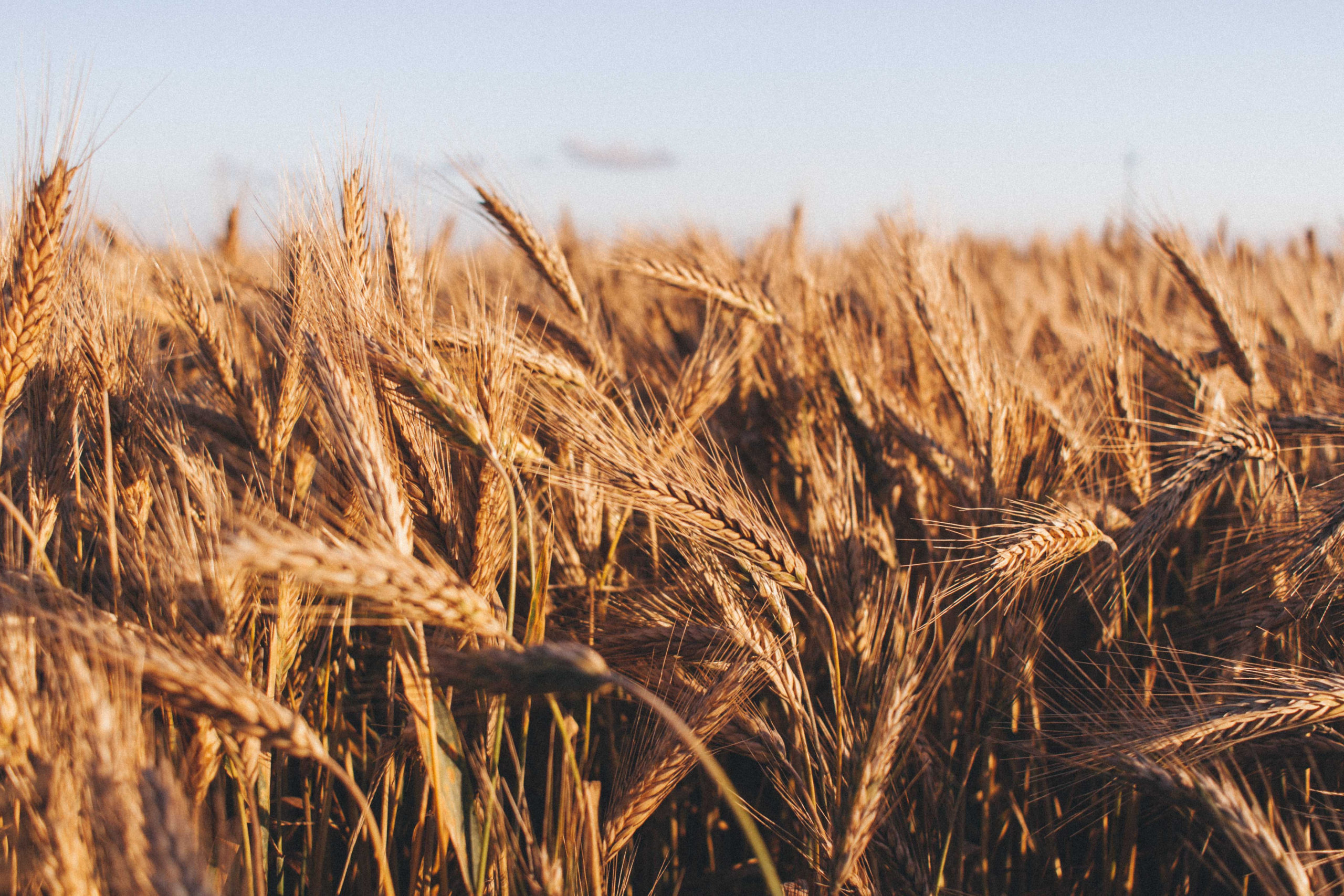Clean living is a way of life. It does not stop with your food, but in every way that we live. Approximately 1 billion pounds of pesticides are added to the environment each year, including hundreds of millions of pesticides are added to our conventional agriculture to control weeds, insects and disease…wait, what?!? While we can’t always control what we are exposed to in the air, we can do our best to control what we put into our bodies, on our bodies and in our living environments. Below are 5 ways in which we can clean up our environment, outside of eating a cleaner diet:
- Plastics
- Household Products
- Cookware
- Water
- Beauty products
Skip the Plastic
Bisphenol A (BPA) and also phthalates are used to make plastic. For decades, there’s been growing research around the health impacts of packaging, especially plastic. Found in hard plastic food containers, such as baby bottles and reusable cups as well as the lining of metal food and beverage cans. It can leach into the food and beverages that we consume, especially if heated. More than 6 billion pounds of BPA are produced and used each year for this purpose. Studies have shown there can be serious health risks tied to packaging products in certain potentially harmful materials. BPA or plastics that contain phthalates are a few of them, as they are known to leach into the products and contaminate formulas, especially when heated. Intake of BPA is associated with infertility and miscarriages as well as overall disrupting hormone levels. Studies show that higher BPA levels in urine are associated with poor egg quality in women trying to conceive.
Tips:
- Swap food storages containers for glass and plastic wrap for reusable beeswax wrap.
- Avoid drinking from plastic water bottles and swap for stainless steel or glass!
- Try to avoid buying foods packaged in plastic wrap like deli meats, etc
- Avoid canned items—try making your beans at home!
- Try to avoid touching receipts (yes, these all contain BPA!
Dish it Out
Opt for a dish soap with safer ingredients like Seventh generation, branch basics or Mrs. Meyer’s. But don’t stop there! Try using cleaner laundry detergents and household products. Conventional cleaners and dish soaps may be packed with toxins. Some chemicals that are used can contributed to asthma, infertility and cancers.
Tips:
- Go green! Use chemical free products in your home (soaps, detergents, cleaning supplies, insect and weed killers).
- Try using Seventh Generation, Method, Norwex, Branch Basics or Mrs. Meyer products for cleaning.
- Make your own weed killer with white vinegar, Environmentally friendly liquid dish soap and salt! I like The Garden Glove’s recipe!
Sizzle Safely
Choose safer cookware, like stainless steel, cast iron or ceramic. Cooking with the wrong pans can contribute to exposure of heavy metals as over time these chemicals can leach into our food. Pots or pans with a nonstick coating tend to arouse the most concern. That’s because they are usually made with a polymer coating whose active ingredient is called polytetrafluoroethylene (PTFE), a unique polymer coating that prevents food from sticking in the pans during the cooking process. You may know PTFE by its brand name, Teflon. Studies have found that at normal cooking temperatures, PTFE-coated cookware releases various gases and chemicals that present mild to severe toxicity. More alarming is the fact that a well-known toxic environmental pollutant, perfluorooctanoic acid (PFOA), is also used in the synthesis of PTFA. There are some reports where PFOA was detected in the gas phase released from the cooking utensils. Potential contamination with (PFOA) is associated with cancer; mammary cancer; reproductive toxicity and endocrine disruption
Opt for better cookware and be sure to hand wash over placing in dishwasher to protect them and prevent wear and tear.
Tips:
- Use cast iron skillets and be sure to care for them properly. Wash skillet with hot water and a mesh brush. Be sure to thoroughly dry (can put on stove or in oven to allow to dry. Then coat with a small amount of oil like coconut or avocado oil then store. Once your cast-iron skillet is well seasoned, you will be able to cook just about anything in it, except very delicate items likes flaky fish and crepes.
- Try ceramic pots and pans that are durable enough to high heat over time. The Always Pan is designed to replace 8 different cookware pieces. Great to make eggs, omelets, pan-fried meats and stir fry. Use as a fry pan, sauté pan, steamer, skillet, saucier, saucepan, non-stick pan, spatula, and spoon rest.
- Stainless steel is durable and non-reactive, meaning chemicals won’t leach into your food from your pan! It is great for cooking just about anything, but it is not non-stick, so you have to use a lot of oil if you plan on cooking eggs, which I don’t recommend for stain-less steel!
Add a Filter
Water filter that is!
Water is crucial to our health. On average, it makes up 60% or more of your body weight. Every system in our bodies depend on water. Water helps to flush the body and get rid of toxins. However, tap water may be high in heavy metals including lead and arsenic. Additionally, excessive quantities of the chlorine or other disinfectants used by public water companies to clean the water also can have negative health effects, if the water is unfiltered at the tap. Chlorine in water also causes itchy skin and dry, brittle hair.
Tips:
- Choose clean, balanced water that is not too acidic or too alkaline. A ph level of 7 is ideal.
- Try bottled water in glass from a spring—Check here for a possible spring near you!
- Install a whole water system like pelican water or quality water, which can get pricey, but options to pay in installments.
- Try a countertop filter system like the New Wave Enviro 10 stage process filter. Filters: Chlorine, chloroform, TTHM’s, Trihalomethanes, Inorganic Arsenic, Lead, PCB’s, Floating Solids, Pesticides, Herbicides, Mercury and many other organic and inorganic contaminants.
- Add a filter to your faucet like Pur water filters. Certified to reduce over 70 contaminants including 99% of Lead, 96% of Mercury, 92% of certain pesticides. Pitchers and dispensers also available.
Invest in Clean Beauty
It has been 82 years since the FDC (Food, Drug and Cosmetic Act) was created. Which means that laws governing Cosmetics (and food!) are most likely older than you! Do you know what is in your beauty products and skincare? Most women are exposed to hundreds of hormone-disrupting chemicals every day before they even leave their home–Shampoo, conditioner, hair products, make up, face wash, body lotion…need I go on?! Did you know that Europe bans 1400 ingredients from their beauty products, Canada bans 600, yet the U.S only bans 31?! There are so few regulations when it comes to what manufacturers can add to these products, and many chemicals put into our skincare products such as parabens and phthalates are considered hormone disrupter chemicals. Phthalates are the most widespread group of toxic chemicals found in our environment. Commonly found in lotions, aspirin, cosmetics, detergents, insecticides, nail polish, perfumes, plastics and skincare products. They have been implicated in reproductive damage and cancer.
Tips:
- Swap your skincare for better beauty like Beautycounter
- Try using coconut oil as moisturizer
- Choose better cosmetics like Beautycounter or bare minerals
- Ditch the old deodorant and try Schmidt’s, Tom’s or the Clean Deo
Sources:
Exposure to bisphenol A is associated with recurrent miscarriage – PubMed (nih.gov)
Perfluorooctanoic Acid (PFOA), Teflon, and Related Chemicals (cancer.org)



